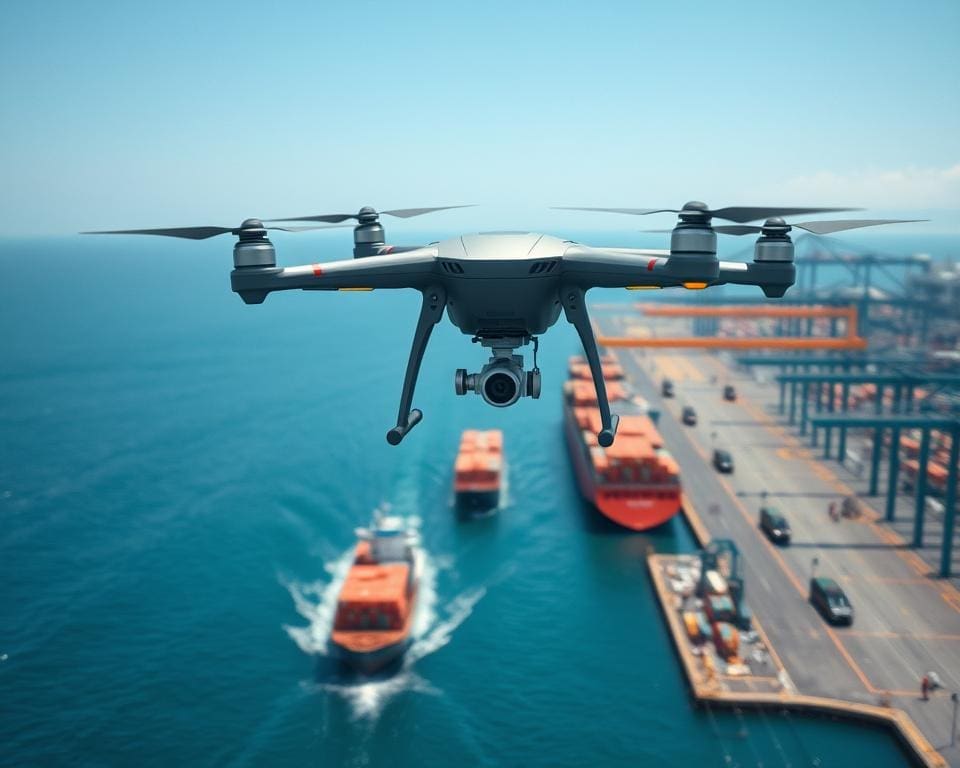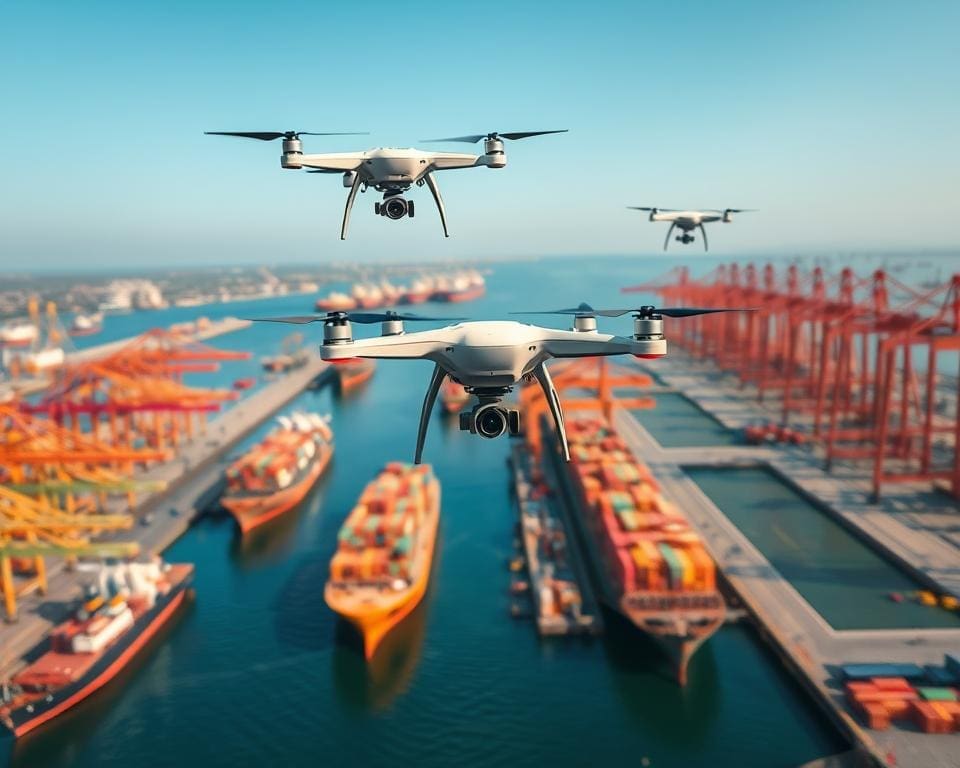In recent years, drone technology in shipping has emerged as a revolutionary force, reshaping the logistics landscape. Drones, or Unmanned Aerial Vehicles (UAVs), are not merely a trend; they are paving the way for more efficient and cost-effective shipping solutions. A report from the International Maritime Organisation highlights that integrating drone capabilities could dramatically enhance delivery times and lower expenses.
Innovative companies like Bloon in the UK are leading the charge in showcasing the impact of drones on supply chain efficiency, particularly in last-mile deliveries. Furthermore, a study by PwC suggests that the utilisation of drones in logistics could yield substantial annual savings, amounting to £1.9 billion across the UK. This transformation signifies a monumental shift towards an innovative shipping landscape, where speed meets reliability.
Understanding Drone Technology in Shipping
To appreciate the transformative impact of drone technology in shipping, one must first delve into its core components. Drones, often seen as advanced tools for logistics, possess unique attributes that enhance operational efficiency. These characteristics propel drone applications in transportation, making them indispensable for modern shipping solutions.
Overview of Drone Technology
The evolution of drone technology has paved the way for remarkable innovations in logistics. Drones provide opportunities for timely deliveries and optimised routes. Their introduction into the shipping sector marks a new era where traditional practices evolve to meet modern demands.
Types of Drones Used in Shipping
- Fixed-wing drones are designed for longer flights, making them suitable for covering vast distances.
- Multi-rotor drones excel in short-range delivery, with capabilities for vertical take-off and landing.
- Hybrid drones combine both features, allowing flexibility in various logistical scenarios.
Guidelines and Regulations in the UK
In the UK, strict guidelines for drone delivery in logistics ensure safety and compliance. The Civil Aviation Authority (CAA) governs the operation of drones, requiring operators to obtain appropriate licenses and adhere to safety protocols. These regulations aim to promote responsible drone usage while safeguarding public safety.

How Drones Are Transforming the Shipping Industry
Drones are revolutionising the shipping landscape, unveiling a tapestry of possibilities that enhance efficiency and redefine logistics. Their implementation has ushered in significant advancements, particularly in the maritime industry, where they offer vital solutions to long-standing challenges.
Key Benefits of Drones in Maritime Industry
The benefits of drones in the maritime industry are manifold. They allow for:
- Reduced delivery times, enabling quicker access to goods.
- Lower shipping costs through the minimisation of human labour and traditional transportation expenses.
- Increased flexibility in logistics, facilitating rapid adjustments in delivery methods as per demand.
By reaching remote locations that are otherwise difficult to access, drones substantially enhance operational capabilities in challenging terrains.
Impact of Drones on Supply Chain Efficiency
The impact of drones on supply chain operations is profoundly transformative. With real-time tracking and data analysis, organisations can optimise inventory management. Enhanced visibility leads to streamlined operations, which reduce delays and improve customer satisfaction. As a result, companies integrating drones into their logistics frameworks witness an uplift in overall productivity.
Real-World Drone Applications in Transportation
Numerous practical applications illustrate the transformative power of drones in shipping. Companies such as UPS have successfully conducted trials delivering medical supplies to hard-to-reach areas, showcasing how drones can bridge gaps in the supply chain. These initiatives highlight not only the agility drones bring but also their capacity to respond dynamically to urgent needs.
The Future of Drones in Shipping
The future of drones in shipping appears exceptionally promising as advancements in technology pave the way for transformative changes within the industry. Predictions from research firm Gartner indicate that by 2025, a considerable percentage of logistics operations will be adopting drone use cases in cargo shipping. This evolution is driven by improvements in battery life, increased payload capacities, and the progression of autonomous navigation systems, all of which enhance the operational capabilities of drones in the logistics sector.
Major players such as Amazon and Google’s Wing are continually pushing the boundaries, innovating and trialling new drone capabilities to revolutionise delivery services. These initiatives not only highlight the commercial potential of drones but also underline their importance in meeting the growing demand for faster and more efficient delivery solutions. As these companies explore various drone use cases in cargo shipping, they are laying the groundwork for what the shipping landscape could look like in the near future.
Moreover, collaboration between industry stakeholders, including the UK government and technology firms, is set to foster the creation of necessary regulatory frameworks. Such frameworks will facilitate the integration of drones into existing logistics operations, ultimately streamlining processes and enhancing overall efficiency. With a clear vision towards a fully integrated drone delivery system, the shipping industry stands on the cusp of a revolutionary shift, one that could redefine not just operations but the way goods are distributed globally.









